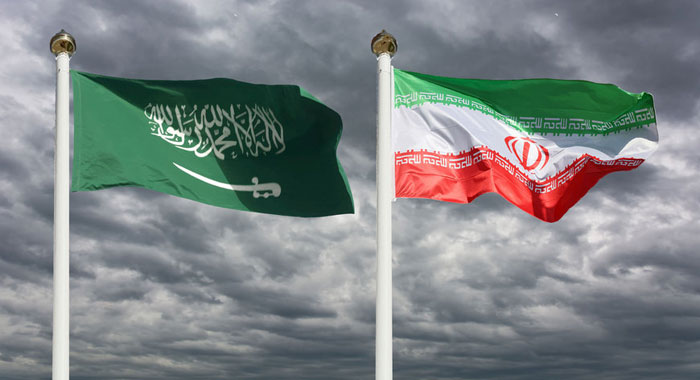Some Important Episodes in the History of the Muslim World
Some Important Episodes in the History of the Muslim World: On September 3, 863 AD, Amr Ibn Abdullah al-Aqta, the Emir of Malatya, which is now in southeastern Turkey, was killed in a heroic fight in the battle of Lalakaon (in northeastern Turkey) with a huge Byzantine army that encircled his force of 8,000 Muslims, while returning from a successful expedition to the Black Sea port of Amisos.
He was a thorn in the side of the Byzantines for over three decades, opening the way for the spread of Islam in Anatolia, and had participated in the victorious Battle of Dazimon in 838 under the Iranian Abbasid general, Afshin. In the 840s, he provided shelter to the surviving members of the Paulician sect of Christianity, who were fleeing persecution from the Greek Orthodox Church of Byzantium. In 844, Amr participated in another decisive victory over the Byzantines at the Battle of Mauropotamos. In the 850s, he often joined forces with Ali Ibn Yayha al-Armani, the Emir of Tarsus and decisively defeated Byzantine Emperor Michael III. Though he was unable to stop a raid in 856 by Petronas deep into Muslim territory, all the way to Amida, he teamed up with the Paulician Christians in 860 to inflict a major defeat on the Byzantines deep into Anatolia where he reached the Black Sea port of Sinope. His death three years later was a relief to the Byzantines. His reputation, however, lived on, and a literary tradition grew around his exploits, which became especially popular a couple of centuries later, among the rising power of the Seljuq Turks in Anatolia.
On September 3, 1260 AD, the Mamluks of Egypt decisively defeated the Iran-based Ilkhanid Mongols of Hulagu Khan at the Battle of Ain Jalut in Palestine, thus turning the tide against these savage invaders from the steppes of Central Asia. The battle marked the high-water point of Mongol conquests, and was the first time a Mongol army had ever been permanently beaten back in direct combat on the battlefield. After previous battlefield defeats, the Mongols had always returned and avenged their loss, ultimately defeating their enemies. The Battle of Ain Jalut marked the first time they were unable to do so. The Mongol Ilkhanate leader Hulagu Khan was not able to advance into Egypt, and the Khanate he established in Iran was only able to defeat the Mamluks once in subsequent expeditions, briefly reoccupying Syria and parts of Galilee for a few months in 1300. The Mongols were decisively defeated by Egyptian Mamluk Sultan Saif od-Din Qutuz and his able general, Baibars (the next Sultan). This victory over Hulagu Khan’s famous Christian Turkish general, Kitbuqa Noyan, ended the threat to Egypt and North Africa, a few years after the Mongol sack of Baghdad and the subjugation of Syria, which included the turning of Omayyad Mosque of Damascus into a cathedral.
On September 6, 1808 AD, on this day 1808 AD, Algerian freedom fighter, Abdul-Qader ibn Mohi od-Din al-Hassani al-Jaza’iri, was born near Mascara in Oran. He claimed descent from Imam Hasan Mojtaba (AS), the elder grandson of Prophet Mohammad (SAWA). In 1825, he set out for the Hajj pilgrimage. In Mecca, he met with and was impressed by Imam Shamil of Daghestan, the leader of the struggle against Russian expansion in the Caucasus which had recently been seized by the Czar from the Qajarid rulers of Iran. He also visited Syria and Iraq. After five years, he returned to his homeland in 1930 a few months before the Ottoman Turks lost it to the French invaders. He led the military struggle against France, organizing guerrilla warfare over the next decade. His failure to get support from the eastern tribes and the Berbers of the west led to the quelling of his uprising. On December 21, 1847, after being denied refuge in Morocco because of French pressure, he surrendered and was exiled to France, where he remained under detention until 1852. He was released on taking an oath never again to question French rule in Algeria. In 1855 he settled in Damascus, where he died in Damascus on 26 May 1883. Abdul-Qader had unfortunately become a member of the notorious Jewish secret organization, the Freemasons.
On 29th of the Islamic month of Shawwal in 341 AH, Ma’adh Abu Tamim al-Mu’iz le Din-Allah, assumed power as the fourth caliph of the Fatemid Ismaili Shi’ite dynasty of North Africa in his capital Mahdiyya in what is now Tunisia. He reigned for 22 years during which he conquered Egypt, where in 362 AH, he shifted his capital to the newly built city “al-Qahera” or Cairo, built by his loyal Sicilian general, Jowhar as-Saqali. Jowhar, originally a Greek who embraced the truth of Islam and became a devout follower of the Ahl al-Bayt, also built in Cairo the grand al-Azhar Mosque, which derives its name from “az-Zahra” the famous epithet of Hazrat Fatema (SA), the daughter of Prophet Mohammad (SAWA). The Fatemids restored the full form of the “Azan” from the minarets of al-Azhar and other mosques, by bearing testimony to the vicegerency of Imam Ali (AS) after the mission of Prophet Mohammad (SAWA). The phrase “hayya ala khayr il-amal” (hasten to the best of deeds), which was dropped from the “Azan” by caliph Omar ibn Khattab, after the passing away of the Prophet, was also revived.
On 2nd of the Islamic month of Zil-Qa’dah in 883 AH, the Treaty of Istanbul was signed by the Ottoman Empire and the Republic of Venice, officially ending the 15-year war between the two sides as a result of the advance of the Turks under Sultan Mohammad Fateh (conqueror of Constantinople) to the outskirts of Venice. The treaty made the Venetians to cede Shkodra and other territories on the Dalmatian coastline, as well as the Greek islands of Negroponte and Lemnos. The Venetians also agreed to pay a tribute of around 10,000 ducats per year in order to acquire trading privileges in the Black Sea.
On September 9, 1493 AD, Ottoman Sultan, Bayezid II defeated a joint army of the kingdoms of Croatia and Hungary at the Battle of Krbava, a part of Lika region in southern Croatia. The Ottoman forces were led by Khadem Yaqub Pasha, the Governor of Bosnia.
On September 11, 1697 AD, the Battle of Zenta was fought in Serbia, on the east side of the Tisa River, resulting in a victory for the Austrians and decisive defeat for the Ottoman Turks. While the Ottoman army was in the process of crossing the river, the Austrians launched a surprise attack and massacred at least 30,000 Turkish Muslims. As a result, the Ottoman Empire lost control over Bosnia, and so demoralized was Sultan Mustafa II that he signed the Treaty of Karlowitz in 1699, giving away large parts of Central Europe including Hungary.
On September 12, 1683 AD, the Ottoman army which was on the verge of conquering Vienna, the capital of Austria as part of its sweep into the heart of Europe, was surprisingly defeated by a coalition of European powers, including Poland. The setback suffered by the Turks marked the end of Ottoman aspirations to conquer all of Europe.
On 7th of the Islamic month of Zil-Qa’dah in 689 AH, the 7th Mamluk (slave) Sultan of Egypt and Syria, al-Mansour Saif od-Din Qalawun, died at the age of 70 after a reign of 11 years. A Qipchaq Turk of Eurasia, who was sold into slavery during his teen years and ended up in the service of Egypt’s Kurdish Ayubid ruler, Sultan as-Saleh, he quickly rose into prominence, because of his abilities. Under his predecessor, Sultan Baybars, he displayed his military prowess in the victorious wars against the Mongols. In 680 AH, Qalawun decisively defeated the huge joint Mongol-Christian army of 80,000 led by Monke Timur, the brother of the Iran-based Abaqa Khan in the Second Battle of Homs, fought in western Syria. He also checked the ambitions of the usurper Crusader states on the coasts of Palestine and Lebanon. He was a great builder of mosques and public institutes, which are still intact in the Egyptian capital.
On 7th of the Islamic month of Zil-Qa’dah in 976 AH, the Ottoman naval commander, Turgut Pasha, liberated the fort of Jerba near Tunis from Spanish occupation after a 63- day siege. Earlier in 960 AH, he had taken control of the Mediterranean island of Corsica and the city of Catania in Malta to free some seven thousand Muslim captives. As Chief Admiral of the Ottoman navy after the death of Khayr od-Din Pasha (Barbarosa), he was made governor of Algiers and later Beyglarbeigi of Tripoli in what is now Libya – a city which he greatly adorned and made it the most beautiful of the Mediterranean coast.
On September 15, 994 AD, the Fatemid Ismaili Shi’ite Dynasty of Egypt, North Africa, Syria and Hejaz won a major victory over the Byzantine Empire at the Battle of the Orontes near the river of the same name in what is now south-central Turkey. The Byzantine army was led by Michael Bourtzes, while the Fatemid forces were under command of the vizier of Damascus, the Turk general Manjutakin. The fighting also involved the Hamadanid Shi’ite Muslim rulers of Aleppo who had become Byzantine vassals. Manjutakin besieged Apamea, and when the two armies met across two fords on the Orontes River, he sent his forces to attack the Hamdanids across one ford while pinning the main Byzantine force down on the other. His men succeeded in breaking through the Hamdanids, turned round and attacked the Byzantine force in the rear. The Byzantine army panicked and fled, losing some 5,000 men.
The Battle of Aghajariyi
On August 26, 1488 AD, the Battle of Aghajariyi near Adana in what is now south-central Turkey ended with the victory of the Mamluk dynasty of Egypt-Syria over the Ottomans. A few months earlier the Ottomans had launched a major attack from both land and sea, but while they managed to take control of Cilicia, their fleet was almost destroyed by a storm off the coast of Syria.
The Mamluks responded by besieging Adana and taking it after three months, thus reasserting their control over Cilicia – a victory that made the local Muslim dynasties of Anatolia flock to their standard instead of siding with the Ottomans. The wars between these two great Turkic powers that started in 1485 and ended 32 years in 1517 with the fall of Cairo to Sultan Selim, are indeed a series of unfortunate events of Muslim history that provided much-needed relief to Europe and emboldened Christian mercenaries to attack Spanish Muslims in their last stronghold, the kingdom of Granada, thereby ending almost eight centuries of Muslim rule in Spain.
The beleaguered Spanish Muslims had appealed to both the Mamluks and the Ottomans for help, but after conquering Constantinople (Istanbul) and ending the Byzantine Empire in 1453, Mohammad al-Fateh, who was advancing towards Italy with sights set on the capture of Rome, fell victim to the deceit and intrigue of European powers, which turned him against fellow Muslims in the east.
In 1468 he planned to attack the Mamluks in Syria but could not do so because of the refusal to cooperate with him by the Turkic dynasties of Anatolia, especially the Aq-Qoyounlu leader Sultan Uzun Hassan, whom he attacked and defeated in 1473. Finally in 1485, the next Ottoman Sultan, Bayazid II, got the pretext to start war with the Mamluks when the Egyptian forces detained an Ottoman ambassador who was returning from Deccan with an Indian ambassador and gifts for the Ottoman Sultan through the Red Sea.
The decisive Battle of Marj Dabiq
On August 24, 1516 AD, the decisive Battle of Marj Dabiq (44 km from Aleppo), resulted in a resounding victory for the Ottoman Sultan Selim I over the Mamluk Sultan al-Ashraf Qansuh al-Ghawri of Egypt-Syria-Hijaz, ending within the next five months the 267-year old Mamluk Dynasty and transforming the Ottomans from a realm on the margin of Islamic lands located in Asia Minor and south-western Europe, into a huge empire encompassing the historical cities of Cairo, Damascus, Bayt al-Moqaddas and Aleppo, as well as the holy cities of Mecca and Medina.
The wars between the two Turkic powers had started in 1485 in southern Anatolia, when Bayazid II instead of concentrating on European campaigns turned eastwards to annex the lands of fellow Muslims in Anatolia, much to the relief of Spanish Christians besieging the Emirate of Granada, the last stronghold of Muslims in Spain, whose ruler had appealed to the Mamluks for help.
Thus in August 1516, Selim, two years after his narrow victory at Chaldiran in Azerbaijan over Shah Ismail I of Persia, invaded Syria, since he greatly feared that the Iranians, who still controlled Iraq, might reorganize and counterattack in view of the widespread influence of the Safavids in Syria and Anatolia (modern day Turkey), and their recent sending of an embassy to the Republic of Venice, through Mamluk ports in the Levant.
In the summer of 1516, Sultan Qansuh al-Ghawri marched into Syria for Asia Minor with a large army, but was deceived by Sultan Selim who made false promises of friendly ties, sent costly gifts, and played the sectarian card by saying that the real enemy is the Shi’ite Muslim Safavid dynasty of Iran.
The Ottoman ruler, having bribed the chief Mamluk courtiers, including the puppet Abbasid caliph of Cairo, Mutawakkel III, launched a treacherous surprise attack that caught the Egyptian forces unprepared and resulted in the death of Sultan al-Ghawri. Aleppo and Damascus were seized as the Ottomans marched unobstructed towards Egypt, defeating the Mamluks on their way in Ghaza, Ridhwania, and finally in January 1517 in Cairo, where Selim I not only styled himself the first non-Arab caliph (with fatwas from court mullahs), but also received allegiance from the Sharif of Hijaz.
On 23rd of the Islamic month of Shawwal in 633 AH, Cordoba (Qurtuba in Arabic), the former capital of the Omayyad state of Andalusia or Islamic Spain, fell to King Ferdinand III of Castile after a 7-month siege, thus ending 520 glorious years of Muslim rule, which the saw the city win worldwide acclaim as a centre of science and civilization at a time Christian Europe was immersed in darkness.
Although Cordoba’s political and administrative decline had begun half-a-century earlier when the Almohad Dynasty shifted the capital to Seville after defeating the Almoravid Dynasty, it was still the cultural centre of Andalusia, with its libraries and schools that over the centuries produced outstanding scholars in various fields such as Ibn Hazm the poet and grammarian, Ibn Saffar the mathematician, al-Bakri the historian and geographer, al-Ghafiqi the botanist, az-Zahrawi the physician, al-Qurtubi the exegete of the holy Qur’an, and Abbas ibn Firnas, the polymath who experimented with a flying machine some thousand years before the airplane was invented.
The decline of Muslims in Spain was the result of fratricide and treachery. The death of Yusuf II in 621 led to a crisis of succession, providing the Christian rulers an opportunity for intervention, especially when the claimant, Abdullah al-Adel, began to ship the bulk of his forces across the straits to Morocco to contest the succession with his rival there, leaving Andalusia undefended. At this, al-Adel’s cousin, Abdullah al-Bayyasi appealed to Ferdinand III for military aid and with the help of the Christian army was installed as Amir in Cordoba, in return for surrendering strategic frontier strongholds.
Soon, when al-Bayyasi was killed by a popular uprising the people of Cordoba, Ferdinand occupied more Muslim territory. In 625 AH when the Almohad ruler in Seville, Abdul-Ala Idris I, made the fatal mistake of abandoning Spain, and left with the remnant of the Almohad forces for Morocco, Andalusia was left fragmented in the hands of local strongmen, led loosely by Mohammad ibn Yusuf ibn Houd al-Judhami. At this, the Christian kings – Ferdinand III of Castile, Alfonso IX of Leon, James I of Aragon and Sancho II of Portugal – immediately launched a series of raids. Houd’s army was destroyed and the Christian armies romped through the south virtually unopposed, as Muslim cities fell one by one, with little or no prospect of rescue from North Africa. Ferdinand seized Badajoz and Mérida, followed by Cazorla, Ubeda and Cordoba, from where he continued his march over the next 12 years to occupy Murcia, Cartagena and finally Seville, the Almohad capital, leaving only a rump Andalusian state, the Emirate of Granada, unconquered.
Toghril Beg, the Turkic warlord who rose to power in Central
On September 4, 1063 AD, Toghril Beg, the Turkic warlord who rose to power in Central Asia, Iran, Iraq, Anatolia, and parts of Syria, died at the age of 73 in Rayy, now a suburb of modern Tehran, where his tower-shaped tomb still stands. He, along with his elder brother, Chaghri Beg, rose to prominence in the service of the Khaqan of the Qara-Khanid Dynasty of Bukhara that had replaced the Iranian Samanid Dynasty in Central Asia. He then united the Turkoman warriors of the Eurasian Steppes into a confederacy of tribes that traced ancestry to an ancestor, named Seljuq, and after defeating the Qara-Khanids, vanquished the Ghaznavids of Khorasan and Afghanistan, before conquering eastern Iran. He established the Seljuq Sultanate after conquering the Iranian Plateau and Anatolia (modern eastern Turkey). The Abbasid caliph of Baghdad secretly invited him to Iraq to replace the Iranian Buwaihid Shi’ite Dynasty. Tughril marched upon Baghdad in 1055, and to the chagrin of the caliph, relegated the Abbasids to figureheads by taking command of the caliphate’s armies in military offensives against the Byzantine Empire and the Syrian territories of the Fatemid Ismaili Shi’ite Caliphate of Egypt and North Africa. In 1058, he lost Baghdad to the Fatemids but recaptured it two years later. On his death the childless Toghril, who had forcibly married the Abbasid caliph’s daughter, was succeeded after a brief struggle between the two sons of his deceased brother, Chaghri, by his surviving nephew Alp Arsalan, perhaps the greatest ruler of the Seljuq Dynasty.
Massacre of Muslims at the hands of European Barbarians
On August 14,1415 AD, Henry the Navigator of Portugal, taking advantage of the weakening of Muslim rule in Spain and northwest Africa, launched an attack on the Maranid Dynasty of Morocco and occupied the port city of Ceuta in the battle of the same name. He slaughtered Muslim defenders in what is known as “baptism of blood”.
On August 15,927 AD, Muslims from North Africa after bringing the whole island of Sicily under Islamic rule, take brief control of the city of Taranto in Apulia, southern Italy, before evacuating it. In the preceding century also, the Muslims, after taking control of Sicily, had established a foothold in southern Italy, founding the emirate of Bari, which fell over a half-a-century earlier in 871 to the savage onslaught of the Christian forces of Holy Roman Emperor Louis II, who massacred Muslims, burned libraries, and turned mosques into churches.
On August 15, 982 AD, the Holy Roman Emperor Otto II was decisively defeated by the Muslim forces of the Fatemid Ismaili Shi’ite caliphate of Egypt and North Africa at the Battle of Capo Colonna, in Calabria, southern Italy. The Fatemids, who after taking control of Sicily in the 960s had advanced into southern Italy, came into conflict with the Germans under Otto, who was advancing from the north with the intention of seizing Apulia and Calabria from the Byzantines. He was met by the forces of the Sicilian Emir, Abu’l-Qassem, to whom the Greek Christians had appealed for aid against the Roman Catholics. After initial success, Otto’s army was bogged down in a pitched battle south of Crotone at Cape Colonna, and although Emir Abu’l-Qassem was martyred, the Muslim troops did not flee the battlefield. They regrouped and managed to surround Otto’s soldiers, killing many of them and inflicting a severe defeat upon the Holy Roman Emperor. The defeat changed the political makeup of southern Italy, where the Muslims retained their presence, while the Greek Orthodox forces joined with the Muslims to regain possession of Apulia from the Roman Catholics. The Muslim presence in southern Italy lasted for over three centuries till 1300 AD, when due to loss of political power they were expelled, and the remaining were forcibly converted to Christianity with mosques turned into churches.
On August 20,1191 AD, during the Crusader Wars launched by European powers on Palestine, King Richard I of England, wrongly called the ‘lion-hearted’, cowardly slaughtered in sadistic manner around 3,000 enchained Muslim men, women, and children, in full view of the army of Salah od-Din Ayyoubi. This dastardly event, known in history as the “Massacre at Ayyadieh”, took place at the fall of Acre to the Crusaders and is the strongest proof of Richard being a bloodthirsty terrorist, and not the courteous and chivalrous warrior-king depicted in the highly biased works of later English writers. The enraged Muslim army tried to attack in a bid to prevent the cold-blooded massacre, but because of its small numbers was repulsed by the Christians.
On August 20, 1131 AD, Baldwin II the self-styled 3rd king of the illegal Latin kingdom of Jerusalem died after a rule of 13 years during which he was constantly involved in wars and killings of Muslims. Earlier as Count of the occupied Syrian-Mesopotamian city of Edessa (currently in southeastern Turkey), he was captured in the Battle of Harran by the Seljuq Turks and was not released until four years later 1108. The Latin kingdom set up by the Crusaders from Europe collapsed in 1187 after 88 years of illegal existence in Palestine, as a result of an attack by a united Muslim army of Kurds, Turks, Arabs and Iranians, while the Egyptian navy effectively blocked the Mediterranean Sea to prevent any aid from Europe.
On August 25, 1095 AD, the first batch of European invaders landed in Syria to start the brutal Crusader wars against Muslims. They occupied Antioch – which is currently in south-western Turkey as a result of the handover by the French occupiers in 1937 despite the Syrian people’s protests. Using Antioch as a base, they took advantage of the disunity and weakness of Muslim rulers, to advance towards Tripoli in what is now Lebanon. It seems that neither the Seljuq Sunni Turks who were dominant in Syria, nor the Fatemid Ismaili Shi’ite dynasty of Egypt-North Africa that controlled Bayt al-Moqaddas, were able to properly assess the intricate plots of the crusaders. They dismissed them as ragtag Byzantine mercenaries. This underestimation of the evil plots of the enemy, coupled with the lethargy of Muslim rulers, enabled the European invaders to attack and occupy the coastal belt of Syria, before advancing upon the Islamic city of Bayt al-Moqaddas, which fell in 1099 AD, and where Sunni and Shi’ite Muslims, as well as Arab Christians were massacred. Some 70,000 men, women and children made up of Arabs, Turks, and Iranians, were slaughtered by the Crusaders. After 88 years of occupation, Bayt al-Moqaddas was liberated in 1188 by the Kurdish ruler, Salah od-Din Ayyoubi who led an army of Kurds, Turks, Arabs and Iranians to end the illegal existence of the Latin Kingdom of Jerusalem. The Crusaders were finally expelled from Palestine by 1270 AD.
On August 26, 1071 AD, the crucial Battle of Manzikert took place in Asia Minor in which the Seljuq Turks led by Sultan Alp Arsalan decisively defeated the Byzantine Army at Manzikert (modern Malazgirt in Turkey), and captured Emperor Romanos IV Diogenes. The battle practically wrecked Byzantine authority in Anatolia and Armenia, and led to the gradual Turkification of Anatolia, with the Seljuqs gaining an area of 78,000 square km in the next decade, which facilitated the mass movement of Turkic Muslims into central Anatolia.
Alp Arslan, whose capital was Isfahan, had initially sought a peace treaty with the Byzantines, for he regarded the Fatemid Ismaili Shi’ite Caliphate of Egypt as his main enemy for control of Syria. A peace treaty was signed in 1069 and renewed in February 1071, to enable the Seljuqs to attack the Fatemid controlled city of Aleppo, but Emperor Romanus tried to distract the Sultan long enough for leading a large army into Armenia.
Alp Arsalan quickly realized the plot of the Christians and met and defeated them at Manzikert. When the captured Emperor Romanos IV was conducted into the presence of Alp Arslan, the Sultan forced him to kiss the ground, and asked him what would he have done if he was captured, to which he got the reply that he would have been killed or exhibited in the streets of Constantinople.
Alp Arslan said: “My punishment is far heavier. I forgive you, and set you free.” Romanos remained a captive of the Sultan for a week, during which he was allowed to eat at his table whilst conditions were worked out for his release; including 10 million gold pieces as ransom for release, which the Sultan reduced to 1.5 million gold pieces as an initial payment followed by an annual sum of 360,000 gold pieces. Alp Arsalan before returning to Isfahan gave Romanos presents and an escort of two emirs and one hundred Mamluks on his route to Constantinople.
On August 28,1521 AD, the Ottoman Turks captured Belgrade, the capital of Serbia, during the reign of Sultan Suleyman the Magnificent. The earlier attempt to take Belgrade by the Ottomans in 1456 under Mohammad al-Fateh had proved inconclusive.
On August 28,1542 AD, during the 19-year long Turkish-Portuguese War that lasted from 1538-to-1557, the Ottomans emerged victorious in the Battle of Wofla. The Portuguese were scattered, and their leader Christovão da Gama was captured and later executed.
On August 29, 1526 AD, the Ottoman Turks led by Sultan Suleiman the Magnificent defeated Hungary in the Battle of Mohacs, in which Louis II, the last Jagiellonian king of Hungary and Bohemia, lost his life. The Muslim victory led to the partition of Hungary for several centuries between the Ottoman Empire, and the Habsburg Monarchy of Austria. Only in the 20th century would Hungary regain its political independence.
On 22nd of the Islamic month of Shawwal in 1330 AH, the Ottomans withdrew from Libya in conformity with the Treaty of Ouchy after losing the war with the invading Italian forces.
Genocide of Muslims in Spain
On August 18, 1487 AD, the four-month siege of the strategic Spanish Muslim port of Malaga of the Nasrid Kingdom of Granada, ended with its occupation by the Christian forces, aided by mercenaries from other parts of Europe, who massacred the Muslims and sold the remnants into slavery. It was the first conflict in which ambulances, or dedicated vehicles for the purpose of carrying injured persons, were used by the Muslim defenders.
King Ferdinand II of Aragon invaded the Muslim territories with 20,000 horsemen, 50,000 infantrymen and 8,000 mercenaries, which were joined by artillery units. Mohammad XIII, Sultan of Granada made an attempt to relieve the fortress of Velez, but was forced to retreat to Granada where he found that he had been overthrown in favour of his nephew Abdullah. Seeing no hope of relief, Velez surrendered on 27 April 1487 on condition that the lives of the people would be spared, and they would keep their property and religion – promises which the Christians did not keep.
The fall of Malaga was a harsh blow to the Spanish Muslims, who were mercilessly massacred by the Christians, while the survivors, numbering round 15,000, were enslaved and their property confiscated. Five years later in 1492, through treachery and deceit, the Christians, assisted by mercenaries from other parts of Europe, attacked and occupied Granada itself, thereby ending almost 8 centuries of glorious Muslim rule in Spain.
Hundreds of thousands of Spanish Muslims fled to North Africa for safety, as their pleas to the Mamluks of Egypt and the Ottomans fell on deaf ears, because of infighting amongst these two great Mediterranean Muslim powers, who could have saved Granada and Spanish Muslims from the Christian onslaught.
Siege of Constantinople
On August 15, 718 AD, the naval and land forces of the Omayyad regime of Damascus were forced to lift the Second Arab Siege of Constantinople after over a year and a month of unsuccessful efforts to conquer the capital of the Byzantine Empire. The First Siege of Constantinople was during the years 674-78 by Mu’awiya Ibn Abu Sufyan, and had ended in failure. In 716, Sulaiman Ibn Abdul-Malik, on hearing of a narration that the city would be conquered by a person bearing the name of a Prophet, sent a massive force of 200,000 via land and by sea through the Mediterranean.
After wintering in the western coastlands of Asia Minor, the Arab army crossed into Thrace on the European side in early summer 717 and built siege lines to blockade Constantinople, which was protected by massive walls. The Arab fleet, which accompanied the land army and was meant to complete the city’s blockade by sea, was neutralized soon after its arrival by the Byzantine navy through the use of Greek fire. The Arab army was crippled by famine and disease during the unusually hard winter that followed. An additional army sent overland from Syria through Asia Minor was ambushed and defeated.
In the meantime Sulaiman was no more and the new caliph was Omar ibn Abdul-Azia. Coupled with attacks by the Bulgarians on their rear, the Arabs were forced to lift the siege, losing 150,000 men throughout the unsuccessful campaign. On its return journey, the Arab fleet was almost destroyed by natural disasters and Byzantine attacks. The siege’s failure had wide-ranging repercussions, including end of the Muslim advance into Europe, and is considered one of history’s most decisive battles, along with the Omayyad defeat in France at the Battle of Tours in 732. The huge financial loss speeded up the collapse of the usurper Omayyad regime, followed by its complete destruction by the Abbasid regime in 750. It was in 1453 that Constantinople was finally captured by Muslims under the Ottoman sultan, Mohammad II (the Prophet’s namesake).












